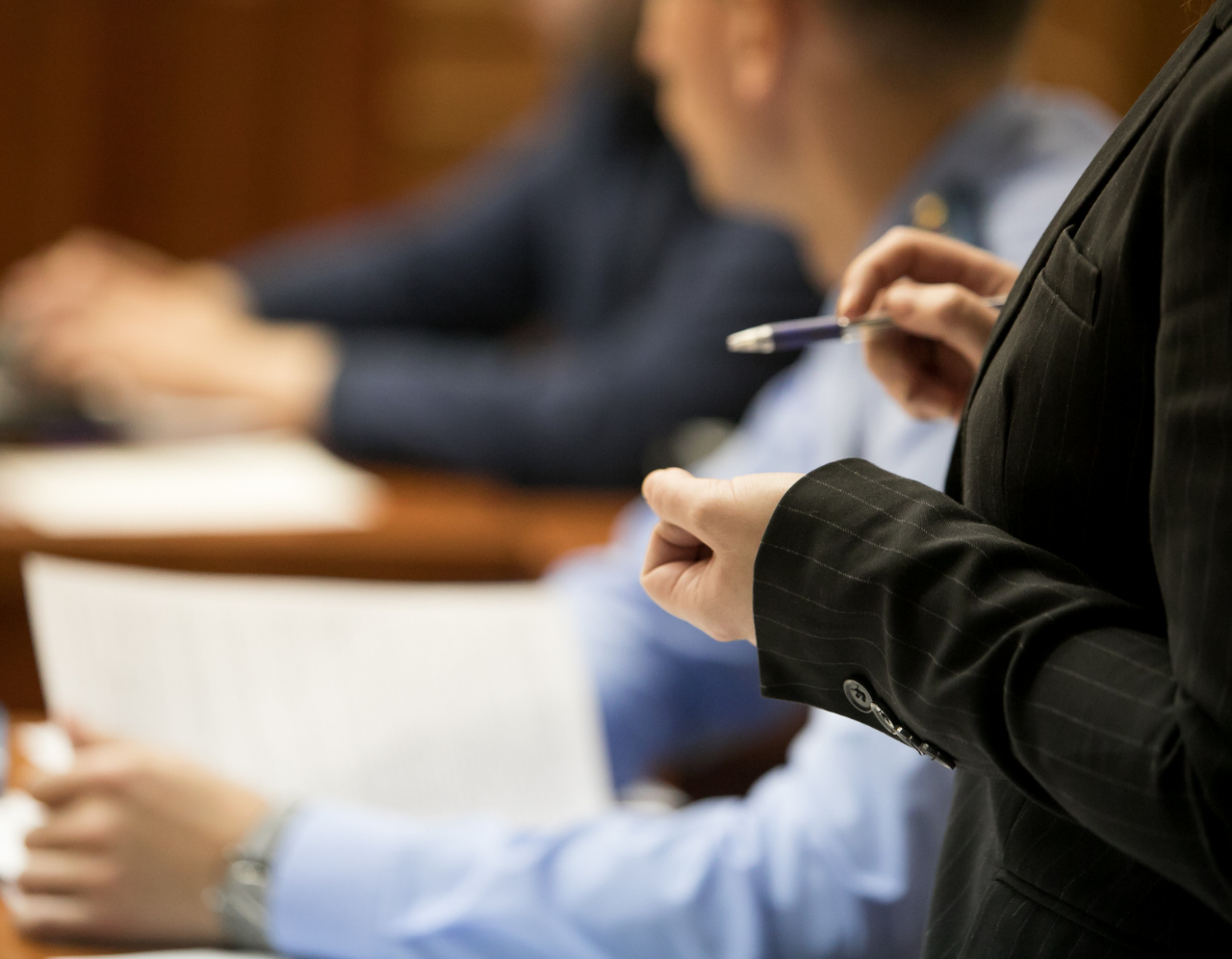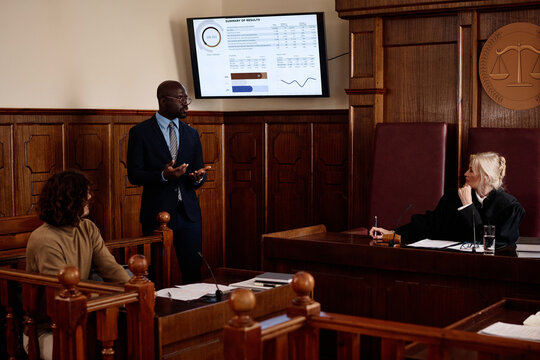Navigating the Complexities of Trial Presentations: Tips for Seamless Distribution and Engaging Debates
In the world of lawful procedures, the art of trial discussion stands as an important factor of success. As lawyers browse the elaborate internet of courtroom characteristics, the ability to effortlessly provide disagreements and evidence while captivating the jury's focus ends up being paramount. The complexities fundamental in trial presentations call for a fragile equilibrium of strategy, skill, and skill. By sharpening methods that guarantee a refined distribution and crafting compelling disagreements that resonate with the audience, lawful experts can considerably improve their advocacy. In a world where persuasion reigns supreme, understanding the complexities of test discussions is not simply an alternative but a requirement for those seeking to prevail in the courtroom.

Understanding Trial Objectives
To successfully browse a trial, it is essential to have a clear understanding of the purposes that need to be accomplished. Prior to entering the court, lawful groups must define their goals and wanted end results. These purposes act as guiding concepts throughout the trial, forming approaches and affecting decision-making procedures.
Comprehending test purposes includes an extensive analysis of the case, lawful criteria, and the client's ideal rate of interests. Trial Presentations. It requires a precise evaluation of the truths, identifying key issues, and expecting potential difficulties. By establishing measurable and particular goals, attorneys can tailor their discussions and debates to line up with the wanted results
In addition, a clear grip of test objectives makes it possible for legal teams to focus on proof, witnesses, and lawful debates effectively. It enables the advancement of a meaningful narrative that reverberates with the judge and jury, strengthening the overall case discussion.

Organizing Proof Successfully
Having a clear understanding of test goals lays the structure for organizing proof successfully in lawful procedures - Trial Presentations. By aligning the discussion of proof with the wanted results of the test, lawful teams can enhance their disagreements and improve their persuasiveness. One important facet of arranging evidence is classification. Organizing proof based upon themes or relevance to details legal elements can help improve the discussion and make complicated details a lot more absorbable for the judge or jury.
One more crucial element in arranging evidence efficiently is establishing a logical flow. Presenting evidence in a sequential and systematic fashion can help develop a compelling narrative that supports the legal arguments being made. Furthermore, using aesthetic aids such as charts, charts, or timelines can additionally enhance the organization of proof and aid in clarifying intricate relationships or sequences of occasions.
Moreover, ensuring that all evidence offered is acceptable and appropriate to the situation is important. Inadmissible or unnecessary proof can detract from the stamina of the argument and potentially hurt the reliability of today celebration. A precise evaluation and choice process need to be taken on to include only the most impactful and legally audio proof in the test presentation.
Crafting Persuasive Narratives
Crafting compelling narratives plays a critical role in offering influential disagreements during legal procedures. A well-crafted narrative has the power to astound the audience, evoke emotions, and inevitably guide the decision in favor of the here and now celebration. When constructing a story for a test presentation, it is necessary to develop a clear story that highlights key factors and attaches them in a meaningful manner. Begin by detailing the facts of the instance in an engaging fashion, guaranteeing that the series of occasions is simple to follow. Introduce personalities efficiently, offering history info that assists the target market understand their actions and motivations. In addition, including brilliant summaries and engaging language can bring the narrative to life, making it a lot more unforgettable for the discretionary. By weaving with each other proof, testimony, and lawful arguments right into a convincing and cohesive story, lawyers can effectively promote for their customers and enhance the possibility of a desirable outcome in the court.
Mastering Visual Aids
Effective use visual aids is crucial to improving the influence and clarity of test presentations. Visual aids, when used purposefully, have the power to simplify complex information, reinforce bottom lines, and leave a long-term perception on the discretionary. To grasp aesthetic help in trial presentations, it is important to make sure that they are clear, concise, and relevant to the debates being made.
When integrating aesthetic aids, such as graphes, timelines, pictures, or graphs, into a test presentation, it is necessary to maintain them aesthetically appealing yet specialist. The visuals need to complement the verbal debates, giving a visual depiction of the info being talked about without overwhelming the audience with unneeded information.
Additionally, experimenting the aesthetic aids ahead of time is critical to make certain a seamless delivery throughout the test. Acquainting oneself with the web content, changes, and timings of each aesthetic aid can help maintain the circulation of the presentation and prevent technical glitches that may develop.
Supplying Impactful Closing Arguments
A compelling closing argument offers as the conclusion of a trial discussion, enveloping the core story and encouraging the court and court in the direction of a desirable decision. To deliver an impactful try this website closing disagreement, it is vital to succinctly recap crucial factors, highlight the strengths of your situation, and attend to any type of weaknesses in a critical way. Begin by outlining the main disagreements that sustain your client's position, stressing why the evidence offered throughout the test supports your narrative. It is important to develop a sense of communication and quality, guiding the court and court in the direction of the desired final thought.
Furthermore, including psychological charm can additionally reinforce your closing argument. Eventually, a well-crafted closing argument need to leave an enduring impression, engaging the court and jury to rule in your client's support.
Verdict
Finally, mastering trial presentations includes comprehending goals, organizing evidence, crafting narratives, making use of aesthetic help, and delivering impactful closing disagreements. By implementing these techniques successfully, attorneys can offer their case seamlessly and make engaging debates in the court room. It is essential to navigate the complexities of trial discussions with accuracy and skill to achieve success in legal proceedings.
By straightening the discussion of proof with the desired end results of the test, lawful groups can enhance their disagreements and improve their persuasiveness (Trial Presentations). To understand visual help in test presentations, it click for more info is essential to make sure that they are clear, succinct, and relevant to the arguments being made
A compelling closing debate offers as the conclusion of a trial presentation, enveloping the core narrative and encouraging the court and court towards a favorable choice. Begin by describing the primary disagreements that support your customer's setting, highlighting why the evidence presented throughout the test index supports your story.In verdict, mastering trial presentations involves recognizing objectives, arranging proof, crafting stories, making use of aesthetic aids, and providing impactful closing arguments.